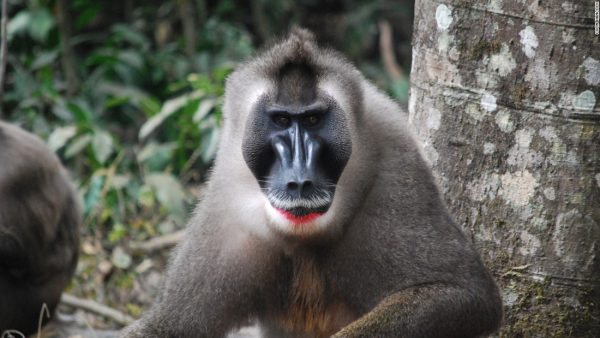Endangered species are always in the news, especially if you are a fan of National Geographic or Discovery channels. One of such animals or specifically, mammals are the Drill Monkey; a unique, semi-terrestrial, seasonally semi-nomadic monkey, that exhibits extreme sexual dimorphism with males weighing up to 45 kg – three times the size of females. A species that is among Africa’s most endangered mammals, and are listed by the International Union for Conservation of Nature (IUCN) as the highest conservation priority of all African primates, the Drill Monkeys are very special then. But more than its conservation, what makes this mammal important is the fact that they are only native to Nigeria.
The Drill Monkey: The Native of Nigeria…and the Close Relatives
Drill Monkeys are native to Nigeria; precisely, found only in Cross River State, Nigeria. However, it has a close relative; the mandrill Mandrillus sphinx, found from southern Cameroon, on Bioko Island of Equatorial Guinea (Rio Muni), Gabon and then, the Congo. The two species are allopatric across the Sanaga River. Little is known of their behaviour or ecology in the wild. Drill numbers have been declining in all known habitat areas for decades as a result of illegal commercial hunting, habitat destruction, and human development: as few as 3,000 drills may remain in the wild, the highest population estimate is 8,000.
Because of the fast decline in their numbers, their conservation and preservation have become of utmost priority. For example, Drills are fully protected by law in Nigeria and Cameroon and portions of their habitat are technically safeguarded. However, little real protection exists for drills or other endangered species that share their habitat. Drills will only survive the present and into the long term by the grace of their human neighbours, and the will and commitment of their host governments to enforce existing laws. As habitats shrink and become increasingly fragmented, the interactive management of wild and captive populations may play a crucial role.
Other interesting Facts about the Drill Monkey

- Drill monkeys are known for being shy, but they have great smiles. They use this smile, known as an “appeasement grin,” to keep the peace when they greet others.
- The “appeasement grin,” of drills and mandrills are used in both calm and tense situations. Males also grin and smack their lips at females that are potential mates.
- Basically, there’s a lot of visual communication in the large social groups that drills live in.
- Drills are shy, live in only one small, remote area of Africa, and their faces aren’t as colourful as their cousin the mandrill, whose blue-and-red mugs make them instantly recognizable. Because of that, mandrills may have been historically more likely to be displayed in zoos, making them better known to the general public. However, Drills have also been declining in zoos internationally
- Drills have pitch-black faces surrounded with white fringe, which look massive in males because of fatty cheek pads that mandrills don’t have. This striking contrast is finished off by a slash of red under their lower lip that looks like strangely placed lipstick.
Sources
National Geographic.
Featured Image Source: CNN


